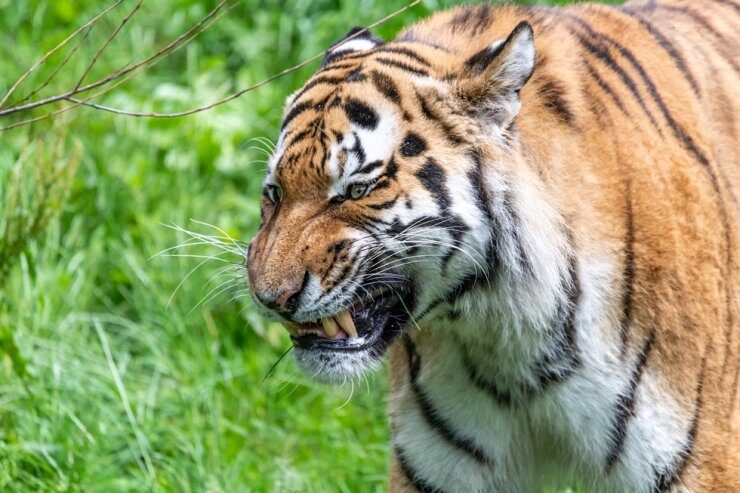A sub-adult tiger, aged just about two years, is suspected to have killed seven persons, all men, in the Porla range within a month. Such a spate of attacks is unprecedented, say wildlife officials.
Officials, however, have confirmed that only four of the attacks are by the two-year-old tiger. They are still unsure about whether the other three victims, too, had died due to an attack by this tiger.
The earlier known instances of attacks by Pandharkawda tigers Avni, which was shot dead in 2018, and Rajura tiger RT1, were spread over one-and-a-half years.
Gadchiroli Conservator of Forest Ashok Mankar told The Indian Express, "A two-year old tiger, who was separated from its mother a couple of months ago, has killed at least four persons, beginning August 15. We have the camera trap evidence for the same."
"The other three victims might have been killed by the same tiger but we have no evidence of that. The possibility of the other tiger being involved in these attacks can't be ruled out. The latest attack happened on September 14, when an old man had gone into the forest to collect wild mushrooms, and he fell prey to the attack," he added.
Incidentally, a capture order was issued by Principal Chief Conservator of Forest (Wildlife) Sunil Limaye on September 2 after the animal killed four persons on August 15, 19, 25 and 31. But even as two tracking teams of Navegaon-Nagazira Tiger Reserve were trying to capture the tiger, three more people have died on September 6, 11 and 14.
"We have set up cages with baits in the forest but the animal has so far not taken the bait," Mankar said.
The CF said that Porla forest is a zudpi jungle (a forest full of shrubs) and, as such, visibility here was very low. "In the rainy season, the shrubs grow tall. The other peculiar feature of the area is that it has no village roads to approach the paddy farms as farmers grow other crops on farm bunds, which, in other seasons, are used as pathways. So, the farmers use the forest roads, which has made them particularly vulnerable to these attacks," said Mankar.
He added, "All seven men were killed when they were out in the forest to graze cattle or collect wild mushrooms or were returning from their farms".
Asked if the tiger had eaten the bodies of its victims, Mankar said, "... At least in four cases, the tiger had partially eaten body parts of the victims. That is also an evidence that all four attacks were by the sub-adult tiger captured on trap cameras."
With this, Gadchiroli has now seen 10 deaths in tiger attacks so far this year. The previous three deaths had occurred in March and April.
On Wednesday, a six-year-old boy was killed in a leopard attack in the Markanda Range, when he was searching for a goat in the forest, where he had gone with elders of his family.
Gadchiroli has emerged as the second biggest man-animal conflict hotspot in the state after Chandrapur, which has seen 33 fatal attacks this year so far.
Comment: Up by 13 since July, see earlier report: Man killed by tiger in Chandrapur district of Maharashtra, India - 20 such deaths so far in 2021
Gadchiroli, which had over 100 tigers till the late 1970s, had lost almost its entire tiger population over the next few decades. Over the last about eight years, tigers have slowly started repopulating Gadchiroli, particularly from the adjoining Brahmapuri division in Chandrapur district, which itself is the biggest man-tiger conflict zone in the state.
"The district currently has about 17 adult tigers — three of them breeding tigresses — in the five ranges of Armori, Porla, Gadchiroli, Chatgaon and Wadsa," Mankar said.




Reader Comments
to our Newsletter